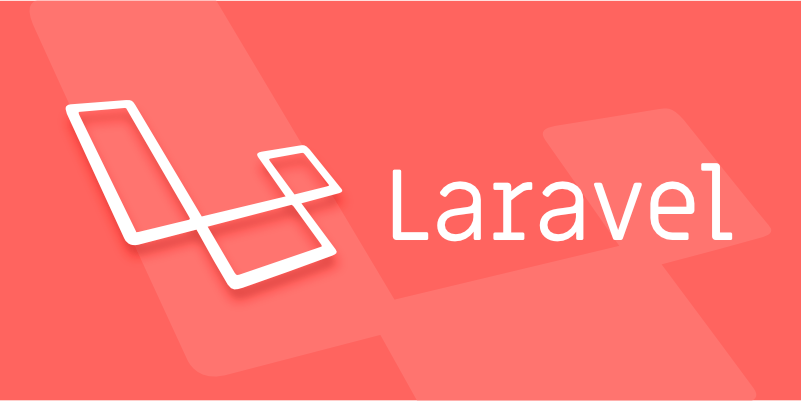Use session to store visitor shopping carts, and the database stores logged in to user shopping carts for persistence; 2. Create cart tables to store user shopping cart data; 3. Create CartService service class to encapsulate addition, deletion, modification and search logic; 4. Create CartController controller to handle shopping cart operations; 5. Define routes in web.php; 6. Create Blade template to display shopping cart content; 7. Merge session shopping carts to the database when the user logs in. This solution implements a hybrid shopping cart system that supports visitors and certified users, and is durable, scalable and meets practical application needs.

Implementing a shopping cart in Laravel can be done in several ways depending on your needs—session-based for guest users, database-backed for persistent carts, or using a package like gloudemans/shoppingcart (now archived, but still used). Below is a practical guide to building a simple yet effective cart system from scratch.

1. Decide on Cart Storage: Session vs Database
For most Laravel apps, you'll want to support both guests and logged-in users :
- Guests : Store cart in the session.
- Logged-in users : Store cart in the database, synchronized with session for consistency.
This hybrid approach gives flexibility and persistence.

2. Database Setup (for Authenticated Users)
If you want persistent carts, create a cart table:
php artisan make:migration create_cart_table
Schema::create('cart', function (Blueprint $table) {
$table->id();
$table->foreignId('user_id')->constrained()->onDelete('cascade');
$table->foreignId('product_id')->constrained();
$table->integer('quantity')->default(1);
$table->timestamps();
});Run migration:

php artisan migrate
3. Create a Cart Service Class
Instead of putting logic in controllers, create a reusable service:
php artisan make:service CartService
In app/Services/CartService.php :
namespace App\Services;
use Illuminate\Support\Facades\Auth;
use Illuminate\Support\Facades\Session;
use App\Models\Cart;
use App\Models\Product;
class CartService
{
public function get()
{
if (Auth::check()) {
return Cart::with('product')->where('user_id', Auth::id())->get();
}
return Session::get('cart', []);
}
public function add($productId, $quantity = 1)
{
$product = Product::findOrFail($productId);
if (Auth::check()) {
$cartItem = Cart::firstOrNew([
'user_id' => Auth::id(),
'product_id' => $product->id,
]);
$cartItem->quantity = $quantity;
$cartItem->save();
} else {
$cart = Session::get('cart', []);
if (isset($cart[$productId])) {
$cart[$productId]['quantity'] = $quantity;
} else {
$cart[$productId] = [
'product_id' => $product->id,
'name' => $product->name,
'price' => $product->price,
'quantity' => $quantity,
];
}
Session::put('cart', $cart);
}
}
public function update($productId, $quantity)
{
if (Auth::check()) {
$cartItem = Cart::where('user_id', Auth::id())
->where('product_id', $productId)
->first();
if ($cartItem) {
if ($quantity <= 0) {
$cartItem->delete();
} else {
$cartItem->quantity = $quantity;
$cartItem->save();
}
}
} else {
$cart = Session::get('cart', []);
if (isset($cart[$productId])) {
if ($quantity <= 0) {
unset($cart[$productId]);
} else {
$cart[$productId]['quantity'] = $quantity;
}
Session::put('cart', $cart);
}
}
}
public function remove($productId)
{
$this->update($productId, 0);
}
public function clear()
{
if (Auth::check()) {
Cart::where('user_id', Auth::id())->delete();
} else {
Session::forget('cart');
}
}
public function total()
{
$cart = $this->get();
if (Auth::check()) {
return $cart->sum(fn($item) => $item->product->price * $item->quantity);
} else {
return collect($cart)->sum(fn($item) => $item['price'] * $item['quantity']);
}
}
}Make sure your
Productmodel is set up and has apricefield.
4. Create Cart Controller
php artisan make:controller CartController
namespace App\Http\Controllers;
use App\Services\CartService;
use Illuminate\Http\Request;
class CartController extends Controller
{
protected $cartService;
public function __construct(CartService $cartService)
{
$this->cartService = $cartService;
}
public function index()
{
$cartItems = $this->cartService->get();
$total = $this->cartService->total();
return view('cart.index', compact('cartItems', 'total'));
}
public function add(Request $request)
{
$this->cartService->add($request->id, $request->quantity ?? 1);
return redirect()->back()->with('success', 'Item added to cart!');
}
public function update(Request $request, $id)
{
$this->cartService->update($id, $request->quantity);
return redirect()->route('cart.index');
}
public function remove($id)
{
$this->cartService->remove($id);
return redirect()->route('cart.index');
}
public function clear()
{
$this->cartService->clear();
return redirect()->route('cart.index');
}
}5. Define Routes
In routes/web.php :
use App\Http\Controllers\CartController;
Route::middleware(['auth'])->group(function () {
Route::get('/cart', [CartController::class, 'index'])->name('cart.index');
Route::post('/cart/add/{id}', [CartController::class, 'add'])->name('cart.add');
Route::put('/cart/update/{id}', [CartController::class, 'update'])->name('cart.update');
Route::delete('/cart/remove/{id}', [CartController::class, 'remove'])->name('cart.remove');
Route::delete('/cart/clear', [CartController::class, 'clear'])->name('cart.clear');
}); You can allow add without auth if you want guests to add items.
6. Blade Template Example
resources/views/cart/index.blade.php :
<h1>Your Cart</h1>
@if(session('success'))
<div class="alert alert-success">{{ session('success') }}</div>
@endif
<ul>
@foreach($cartItems as $item)
<li>
{{ $item['name'] ?? $item->product->name }}
x {{ $item['quantity'] ?? $item->quantity }}
= ${{ ($item['price'] ?? $item->product->price) * ($item['quantity'] ?? $item->quantity) }}
<form method="POST" action="{{ route('cart.update', $item['product_id'] ?? $item->product_id) }}" style="display:inline;">
@csrf
@method('PUT')
<input type="number" name="quantity" value="{{ $item['quantity'] ?? $item->quantity }}" min="1" />
<button type="submit">Update</button>
</form>
<form method="POST" action="{{ route('cart.remove', $item['product_id'] ?? $item->product_id) }}" style="display:inline;">
@csrf
@method('DELETE')
<button type="submit">Remove</button>
</form>
</li>
@endforeach
</ul>
<p><strong>Total: ${{ number_format($total, 2) }}</strong></p>
<a href="{{ route('checkout') }}">Proceed to Checkout</a>7. Sync Cart on Login (Optional but Recommended)
When a user logs in, merge session cart into the database.
In your LoginController or use an event listener:
// In Authenticated method of LoginController or use event
public function authenticated(Request $request, $user)
{
// Merge session cart into database
$sessionCart = Session::get('cart', []);
foreach ($sessionCart as $item) {
$cartItem = Cart::firstOrNew([
'user_id' => $user->id,
'product_id' => $item['product_id'],
]);
$cartItem->quantity = $item['quantity'];
$cartItem->save();
}
Session::forget('cart'); // Clear session cart
}Final Notes
- You can enhance this with AJAX for smoother UX.
- Consider using Laravel Livewire for real-time cart updates.
- For large-scale apps, consider using Redis or a dedicated cart microservice.
Basically, you now have a flexible cart system that works for both guests and logged-in users, persists data, and is easy to extend. Not overly complex, but covers real-world needs.
The above is the detailed content of How to implement a shopping cart in Laravel?. For more information, please follow other related articles on the PHP Chinese website!

Hot AI Tools

Undress AI Tool
Undress images for free

Undresser.AI Undress
AI-powered app for creating realistic nude photos

AI Clothes Remover
Online AI tool for removing clothes from photos.

Clothoff.io
AI clothes remover

Video Face Swap
Swap faces in any video effortlessly with our completely free AI face swap tool!

Hot Article

Hot Tools

Notepad++7.3.1
Easy-to-use and free code editor

SublimeText3 Chinese version
Chinese version, very easy to use

Zend Studio 13.0.1
Powerful PHP integrated development environment

Dreamweaver CS6
Visual web development tools

SublimeText3 Mac version
God-level code editing software (SublimeText3)

Hot Topics
 Creating Custom Validation Rules in a Laravel Project
Jul 04, 2025 am 01:03 AM
Creating Custom Validation Rules in a Laravel Project
Jul 04, 2025 am 01:03 AM
There are three ways to add custom validation rules in Laravel: using closures, Rule classes, and form requests. 1. Use closures to be suitable for lightweight verification, such as preventing the user name "admin"; 2. Create Rule classes (such as ValidUsernameRule) to make complex logic clearer and maintainable; 3. Integrate multiple rules in form requests and centrally manage verification logic. At the same time, you can set prompts through custom messages methods or incoming error message arrays to improve flexibility and maintainability.
 Adding multilingual support to a Laravel application
Jul 03, 2025 am 01:17 AM
Adding multilingual support to a Laravel application
Jul 03, 2025 am 01:17 AM
The core methods for Laravel applications to implement multilingual support include: setting language files, dynamic language switching, translation URL routing, and managing translation keys in Blade templates. First, organize the strings of each language in the corresponding folders (such as en, es, fr) in the /resources/lang directory, and define the translation content by returning the associative array; 2. Translate the key value through the \_\_() helper function call, and use App::setLocale() to combine session or routing parameters to realize language switching; 3. For translation URLs, paths can be defined for different languages ??through prefixed routing groups, or route alias in language files dynamically mapped; 4. Keep the translation keys concise and
 Working with pivot tables in Laravel Many-to-Many relationships
Jul 07, 2025 am 01:06 AM
Working with pivot tables in Laravel Many-to-Many relationships
Jul 07, 2025 am 01:06 AM
ToworkeffectivelywithpivottablesinLaravel,firstaccesspivotdatausingwithPivot()orwithTimestamps(),thenupdateentrieswithupdateExistingPivot(),managerelationshipsviadetach()andsync(),andusecustompivotmodelswhenneeded.1.UsewithPivot()toincludespecificcol
 Sending different types of notifications with Laravel
Jul 06, 2025 am 12:52 AM
Sending different types of notifications with Laravel
Jul 06, 2025 am 12:52 AM
Laravelprovidesacleanandflexiblewaytosendnotificationsviamultiplechannelslikeemail,SMS,in-appalerts,andpushnotifications.Youdefinenotificationchannelsinthevia()methodofanotificationclass,andimplementspecificmethodsliketoMail(),toDatabase(),ortoVonage
 Understanding and creating custom Service Providers in Laravel
Jul 03, 2025 am 01:35 AM
Understanding and creating custom Service Providers in Laravel
Jul 03, 2025 am 01:35 AM
ServiceProvider is the core mechanism used in the Laravel framework for registering services and initializing logic. You can create a custom ServiceProvider through the Artisan command; 1. The register method is used to bind services, register singletons, set aliases, etc., and other services that have not yet been loaded cannot be called; 2. The boot method runs after all services are registered and is used to register event listeners, view synthesizers, middleware and other logic that depends on other services; common uses include binding interfaces and implementations, registering Facades, loading configurations, registering command-line instructions and view components; it is recommended to centralize relevant bindings to a ServiceProvider to manage, and pay attention to registration
 Understanding Dependency Injection in Laravel?
Jul 05, 2025 am 02:01 AM
Understanding Dependency Injection in Laravel?
Jul 05, 2025 am 02:01 AM
Dependency injection automatically handles class dependencies through service containers in Laravel without manual new objects. Its core is constructor injection and method injection, such as automatically passing in the Request instance in the controller. Laravel parses dependencies through type prompts and recursively creates the required objects. The binding interface and implementation can be used by the service provider to use the bind method, or singleton to bind a singleton. When using it, you need to ensure type prompts, avoid constructor complications, use context bindings with caution, and understand automatic parsing rules. Mastering these can improve code flexibility and maintenance.
 Strategies for optimizing Laravel application performance
Jul 09, 2025 am 03:00 AM
Strategies for optimizing Laravel application performance
Jul 09, 2025 am 03:00 AM
Laravel performance optimization can improve application efficiency through four core directions. 1. Use the cache mechanism to reduce duplicate queries, store infrequently changing data through Cache::remember() and other methods to reduce database access frequency; 2. Optimize database from the model to query statements, avoid N 1 queries, specifying field queries, adding indexes, paging processing and reading and writing separation, and reduce bottlenecks; 3. Use time-consuming operations such as email sending and file exporting to queue asynchronous processing, use Supervisor to manage workers and set up retry mechanisms; 4. Use middleware and service providers reasonably to avoid complex logic and unnecessary initialization code, and delay loading of services to improve startup efficiency.
 Handling exceptions and logging errors in a Laravel application
Jul 02, 2025 pm 03:24 PM
Handling exceptions and logging errors in a Laravel application
Jul 02, 2025 pm 03:24 PM
The core methods for handling exceptions and recording errors in Laravel applications include: 1. Use the App\Exceptions\Handler class to centrally manage unhandled exceptions, and record or notify exception information through the report() method, such as sending Slack notifications; 2. Use Monolog to configure the log system, set the log level and output method in config/logging.php, and enable error and above level logs in production environment. At the same time, detailed exception information can be manually recorded in report() in combination with the context; 3. Customize the render() method to return a unified JSON format error response, improving the collaboration efficiency of the front and back end of the API. These steps are






